
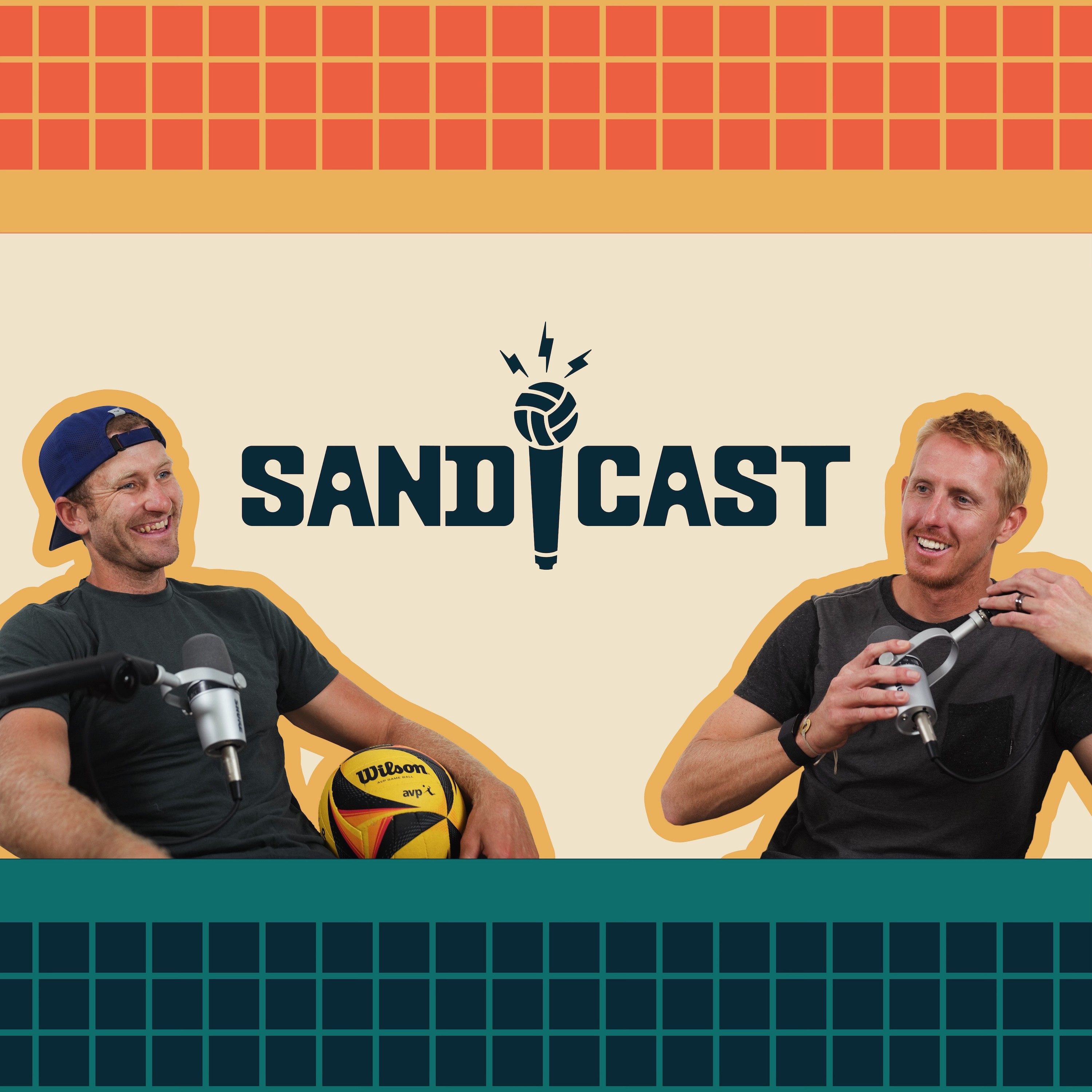
1.1M
Downloads
467
Episodes
SANDCAST is the first and leading beach volleyball podcast in the world. Hosts Tri Bourne and Travis Mewhirter take listeners into the world of the AVP, Volleyball World Beach Pro Tour and any other professional beach volleyball outlets, digging deep into the lives of the players both on and off the court as well as all of the top influencers in the game.
Episodes

Wednesday Mar 21, 2018
Maddison McKibbin and the making of the Beard Bros
Wednesday Mar 21, 2018
Wednesday Mar 21, 2018
The McKibbins are not all that different from any other set of siblings, if not a touch more hirsute and athletically inclined.
They fight. They argue. They point out one another’s flaws, sometimes a bit gleefully. And they do this often. Often enough for Riley McKibbin to film a video blog detailing the frustrations of volleyball, and playing volleyball with your brother, and how to deal with these frustrations.
“I think we would both agree that we have a hard time listening to each other,” Maddison McKibbin said on SANDCAST: Beach Volleyball with Tri Bourne and Travis Mewhirter. “Just because you’re brothers, if you hear one word of critique, you go straight back to the last thing he messed up on, and you’re thinking ‘Dude don’t talk to me when you’re doing this.’ You revert to it and it’s so bad. I would never treat anyone else like that.
“It’s this battle of trying to take suggestions and criticisms and critiques constructively and I know that sounds very basic but it’s hard when it’s your brother.”
Their relationship is at once their biggest strength and vulnerability. On a tip from defender Geena Urango, a fellow USC Trojan, the McKibbins now pick out three aspects or skills each of them want to work on in practice, which has both improved their volleyball and reduced the resistance to critiques from a sibling.
“If we mess up on something else, it’s ‘I’m not going to get mad at you, you’re not going to get mad at me, we’re just working on these three things,’” Maddison said. “And then enforcing at the end of practice one thing that went well and one thing that we’re working on. The idea is to cut down on the frustration and whatever you want to call it between you and your partner, because when you have a plan, you can call someone out if you really want to, like ‘Hey, Riley, you suck at number two.’”
It’s why this past season was so different for Maddison, who hadn’t played with anyone aside from Riley since 2011. When Riley hurt his hand in the season-opening event in Huntington Beach, Maddison was forced to explore partner options, to play with someone he didn’t share a childhood with, didn’t share the USC court with, didn’t travel throughout Europe with, didn’t grind through the qualifiers with.
What he found was this: Finding, and keeping, partners, is tough. Meshing with new partners is tough.
Playing without your brother is kinda weird.
He played Austin and New York with Reid Priddy, and in the subsequent shuffle prior to Seattle, he wound up with Ty Loomis. And after getting swept out of Seattle, they stunned no small number of people in winning San Francisco just two weeks later.
Most would have thought Maddison and Loomis would stick together. A no-brainer. They were champs!
Then again, most don’t understand the bond between the Beard Brothers.
“When I played with Reid I told him ‘When Riley’s coming back, I’m playing with Riley’ and it was the same thing I told to Ty,” Maddison said. “And Ty wanted to keep going and I completely understand. But to me, I’m an incredibly loyal person, and I love the game of beach volleyball, but we both know that, financially, it’s hard to sustain, and playing with my brother, I love playing with my brother.
“When we win, it’s that much better, and when we lose, it sucks. In order to make this lifestyle sustainable, we have to create content, we have to develop a brand within the sport, and I’m not saying I’m only playing with him because of our brand, but when you win with someone who’s had your back for that long, or has encouraged you to pursue so many different things, that in itself is enough to say that ‘I know I had success with this one person but I’d much rather win with you.’
So my goal is: ‘I want to win with you. I want to be these idiotic beard brothers on the AVP. That’s where I want to be in life.”
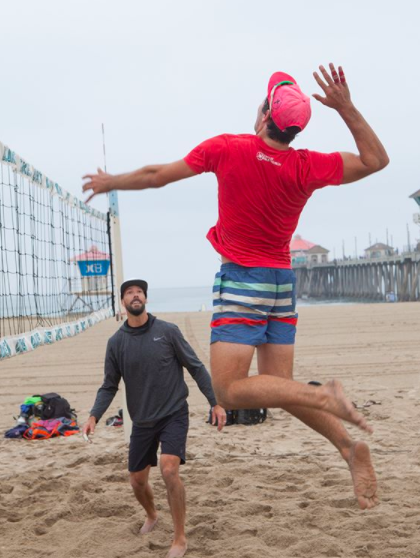
Monday Mar 19, 2018
Newcomers highlight first Norceca of the beach volleyball season
Monday Mar 19, 2018
Monday Mar 19, 2018
Troy Field was, in his own words, “terrified.”
“Just so scared to mess up,” he said on SANDCAST: Beach Volleyball with Tri Bourne and Travis Mewhirter, “to, you know, disappoint this incredible athlete.”
It helped, then, that the incredible athlete in question during last week’s Norceca qualifier was Reid Priddy, and few in volleyball understand what Field was going through more than Priddy. He’s been to four Olympics. He’s won a gold medal. He’s won a bronze medal. In just a single year on the beach, he was one point away from making a final, in San Francisco.
“He’s got some pretty amazing wisdom to offer,” Field said.
Priddy told the 24-year-old that nerves are good. Nerves mean you’re excited, that you care. Focus on what you can control. Not passing or setting or swinging or serving. Just breathing. Which is exactly what Field did.
“I’d see him take a deep breath, which reminded me to take a deep breath,” Field said. Simple. And effective.
Priddy and Field opened with a three-set win over Adam Roberts and another up-and-comer, Spencer Sauter, which put them into the de facto finals – two teams come out of a Norceca qualifier, so the actual final match is of little consequence – against 2017 AVP Rookie of the Year Eric Zaun and veteran blocker Ed Ratledge.
“It was just high level volleyball,” Field said. “Just side out after side out after side out. We battled, battled, battled and took the first set like 27-25. With all that momentum, we were able to figure out what they were doing and Zaun wasn’t really hitting any balls and we were able to work our defense around that and we ended up winning like 21-16 or 21-15 or something like that… Reid was playing out of his mind, just making unbelievable defensive plays.”
It didn’t much matter that the two would lose the next match against Avery Drost and Chase Frishman. They were in, earning spots into a series of tournaments, two of which will be in Mexico, the final in Cuba.
Those three tournaments, should the two choose to play in all of them – they are more than likely not, as the Cuba tournament will run too close to AVP/FIVB Huntington Beach in the first week of May – would add up to one more professional tournament than Field has played in his career. In 2017, he played in a pair of AVPs, failing to make it out of the Hermosa Beach qualifier before making it through in Manhattan Beach with Puerto Rican Orlando Irizarry.
“It’s pretty unreal,” he said. “I’ve never been the person to get super overly excited because I feel like the more you build it up you’ll get disappointed. Everyone has been telling me to just enjoy the moment.”
On the women’s side, another newcomer, Brittany Howard, earned a bid as well. There’s a better chance you’ve heard of Howard than Field. She competed for four years indoors at Stanford before doing a grad year on the beach for Pepperdine, though she was so rusty on the beach that she admitted to DiG Magazine that “I was terrible.”
It’s become apparent she’s a quick learner. Playing with Kelly Reeves, the 2016 AVP Rookie of the Year, Howard beat Amanda Dowdy and Irene Pollock and then the new partnership of top-seeded Kelley Larsen and Emily Stockman, earning their Norceca bid despite also losing the final match to Kim Smith and Mackenzie Ponnet.
“I definitely kind of explored my options,” Reeves said on SANDCAST. “Brittany Howard was always someone I’d been watching from afar and I told her I’d love to get in the sand and try it out. We did and it just felt super comfortable, I don’t know, the chemistry thing was big. We’re definitely volleyball people and I definitely understood where she was as far as up-and-coming. Just the first time we stepped in the sand it was ‘Oh, this girl, she’s got some game.’”
Game enough to have qualified for the final three events of the AVP season, in Hermosa Beach, Manhattan Beach and Chicago, respectively. Game enough to have actually beaten Reeves in Manhattan Beach.
Game enough to have found her new partner for the 2018 season.
Reeves played the majority of the 2017 season with Jen Fopma, though with Fopma pregnant, she had to find either a new blocker or a scrappy defender to play with in 2018. Enter Howard.
“She just did some really funky stuff like ‘Ok I can work with that,’” Reeves recalled when she played Howard. “And then looking to next year, knowing Jen was out, I was like ‘Alright she’s definitely someone I would want to play with.' As soon as we got in the sand, there was just this one play, she had this nice scoop, maybe a block pull move, and she dug it and I set her and she just crushed this ball and I was like ‘Ok she’s got some game.’”
They proved as much last week, and now they’ll be taking two trips to Mexico though the third stop, in Cuba, is unlikely, for the same reasons as Field and Priddy will likely be skipping as well. There’s Huntington, with more to prove, more to learn, a bigger platform on which to play.
“We’re both still new to the game,” Reeves said. “Grantred this is my third season but I’m still learning a ton and she’s still learning a ton and it’s fun to learn and grow with someone. We’re hungry and eager to just get better and I think that’s something I really like about our partnership.”

Wednesday Mar 14, 2018
Brotherly love with Maddison McKibbin
Wednesday Mar 14, 2018
Wednesday Mar 14, 2018
Maddison McKibbin was finished.
Finished with volleyball. Finished with being overseas. Finished with not being paid. Finished with the shady ownership of international volleyball teams. Finished with it all.
He had played the game long enough, beginning at Hawaii’s famed Outrigger Canoe Club then onto Punahou School, where he became a three-time state champ, which preceded four years at USC, where he made a pair of Final Four appearances.
And now there he was, in Greece, looking at his bed, where a random Brazilian man was laying, fast asleep.
Evidently, the owner of McKibbin’s team had signed a new outside hitter. He didn’t tell McKibbin, though apparently he did give the new Brazilian outside the keys to the apartment.
That was it. McKibbin was out. He was going home. Was going to finish his Master’s Degree. Was getting out of volleyball.
Time for something else.
Riley McKibbin, Maddison’s older brother of two years, had other plans. He was going to play in Italy. Would Maddison want to come, just to kick it for three months, drink some wine and hang out in Italy?
For that, sure, he could delay grad school for a few months to hang in Italy. So long as he wasn’t playing volleyball, he was in. And then Riley had another idea.
“What if we give beach a try?”
They had the talent. There was no questioning that. They had been raised in uber-competitive Hawaii, alongside Taylor and Trevor Crabb, Spencer McLaughlin, Brad Lawson, Tri Bourne, competing occasionally against AVP legends Stein Metzger and Kevin Wong and Mike Lambert. Both of the McKibbins had played in FIVB Youth tournaments, and they proved they were good enough indoors to compete and make a living at a professional level.
The transition from indoor to beach sounds simple enough. It's a similar game with similar skillsets, where the underlying principle is the same: pass, set, hit. It, of course, was not. They weren’t entirely sure what the state of their beach skills was, so they bought a handful of AVP volleyballs from Costco and exiled themselves to a court in Venice Beach, a few zip codes away from any serious players. And so there it was that you could find two professional volleyball players, practicing in Venice Beach, legitimately mortified that someone might see them dusting off the rust of a game they hadn’t played for the better part of a decade.
“We couldn’t even hit it over the net,” Riley said in an earlier interview. “The transition from indoor to the beach is so hard. We’re both indoor players, and making that switch is a lot harder than people think.”
Unless, of course, you’re the McKibbins. In the first qualifier they entered, not long after scraping the rust off their beach games, in New York City in 2015, they qualified.
And thus the Beard Bros were born.
Their relationship is both like that of any other siblings – fighting and squabbling wrapped in brotherly love – and yet it is also nothing like that of any other siblings. The McKibbins are partners in everything they do. They’re roommates. They’re business partners. They're AVP partners. They shoot the wildly popular McKibbin Volleyball videos together. They vlog together. They play together.
Even when Maddison won AVP San Francisco while Riley sat out with an injury, even when he was fielding calls from Reid Priddy, even when he had no shortage of partner options, there was never any question whom he would be playing with: Riley McKibbin.
“Riley,” he said on SANDCAST, “is the reason I’m playing volleyball right now.”
And so it is that Maddison, so long as Riley is healthy, will not play with another who's last name is not McKibbin. They're a package deal. Whether they're vlogging about the frustrations of volleyball, filming a tutorial from Kelly Reeves on the nuances of bumpsetting, or practicing against Sean Rosenthal and Chase Budinger, they're going to do it together.
The only thing, for now, that it seems isn't on their agenda?
Shaving.
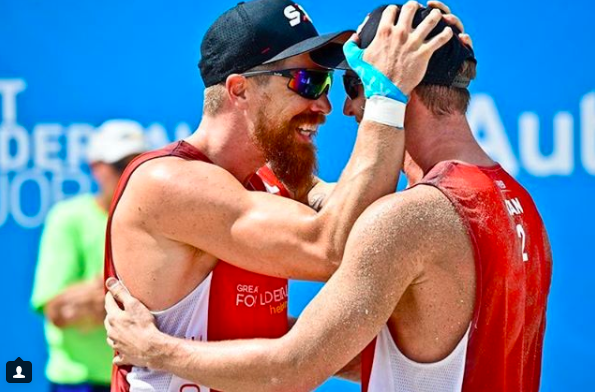
Wednesday Mar 07, 2018
There's no crying in volleyball, with Sam Schachter and Sam Pedlow
Wednesday Mar 07, 2018
Wednesday Mar 07, 2018
Sam Pedlow remembers the crying.
There he was, a full-fledged Canadian, playing hockey, his country’s past-time sport, the American equivalent of football, at a fairly high level, living up to the expectations of all of those around him.
And then he abandoned it.
He left a youth playoff hockey game for a volleyball practice. In some parts of Canada that might very well be considered treason.
“I felt like I was disappointing everybody,” Pedlow recalled on SANDCAST: Beach Volleyball with Tri Bourne and Travis Mewhirter. “I was no longer playing hockey. But in order for our sport to continue to survive we need people to continually replace us. I want to be a place where people are continually beating me. Our program has been on the rise these past five years. We need to keep that momentum going, and we need people to fill in for us when we ultimately retire.”
There is not an especially urgent rush in that regard. Should Pedlow and his partner, 6-foot-6 defender Sam Schachter, remain together, they could legitimately have three more Olympic Games in their futures. Pedlow is just 30, Schachter, already an Olympian in 2016 with Josh Binstock, just 27.
As partners, they’re only beginning to hit their stride, logging their eighth consecutive top 10 finish on the FIVB World Tour with a ninth in Fort Lauderdale this past weekend, beating Austrians Clemens Doppler and Alexander Horst before bowing out in three sets to Spain’s Adrian Gavira and Pablo Herrera.
But beyond their own individual gain and fame, which is on the rise, thanks to the active and wonderful social media from Pedlow, they’re looking to develop a latent beach volleyball community in Canada, which hasn’t won an Olympic medal since 1996, when John Child and Mark Heese claimed bronze in 1996. Schachter’s ninth-place finish in Rio was Canada’s best since 2004.
“We need people starting to play all over the place,” Schachter said. “This sport is so unbelievable because you don’t have to be the biggest and strongest like you would in indoor. It’s so much a mental game where you have to be smart and strategy and you don’t have a coach so there’s an independence factor and the girls are beautiful.”
Looks aside, the Canadian women’s program, which has yet to win an Olympic medal, is becoming a bona fide power in its own right. Two teams – Sarah Pavan and Melissa Humana-Paredes and Heather Bansley and Brandie Wilkerson – claimed top-10 finishes in Florida, and both landed in the top 10 in the world rankings at the close of the 2017 season.
The only team with more points than Pavan and Humana-Paredes? Brazil’s Talita and Larissa, excellent company to be keeping for a hockey-crazed country.
“Our women’s program is going to be strong for a long time,” Pedlow said.
With Pedlow and Schachter climbing the world ranks, the men’s program has an auspicious look as well.
Perhaps soon enough, with a few more top finishes on the word tour, there will be no more crying in volleyball.
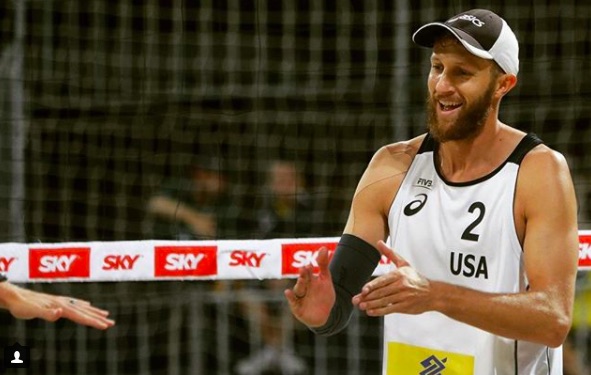
Monday Mar 05, 2018
Breaking down the Fort Lauderdale Major with Theo Brunner
Monday Mar 05, 2018
Monday Mar 05, 2018
Fifth place?
Had you told Theo Brunner, prior to the Fort Lauderdale Major this past weekend, that he’d take fifth place, in a field featuring every top beach volleyball team in the world, after being limited in training, admittedly a bit out of shape, with a new partner, after re-injuring his bad ankle and spraining his other... yeah, he’d have taken that.
He was, as he said on SANDCAST: Beach Volleyball with Tri Bourne and Travis Mewhirter, just happy to play at all.
At the end of last season, Brunner had sprained his ankle, an injury that has limited his training “70 or 80 percent” this off-season, he said. Add into that the fact that he was playing with a new partner in John Hyden, and add onto that the fact that he mildly reinjured that same ankle a few weeks ago, and onto that another sprain of the opposite ankle his first day of training in Fort Lauderdale and fifth isn’t too shabby.
“This was just ridiculous,” he said. “I feel so out of shape…I’m normally pretty on top of my conditioning, probably do too much in the off-season as far as running all the time before practice, on the gym, in the sand, and I couldn’t do that this year. There were times when I was just struggling to catch my breath and I was like ‘Dude you’re probably not going to win this set. Just collect yourself, get a little bit going.’
“It’s just hot and humid out there, and if you’re gas to the floor the entire match, even if you’re in really good shape, it’s not going to be the best result for you. I was just trying to conserve, and when things were getting out of hand, I’m not jumping max and trying to slam this ball, I’m trying to conserve so I can get up on my block and side out consistently the next game.”
Brunner admitted that perhaps that’s not the best spot to be in, though here’s the thing: It worked. Four of his five matches went to three sets, and Brunner and Hyden came out on top in three of them.
They beat Austrians Martin Ermacora and Moritz Pristauz-Telsnigg 15-8 in the third set in a do-or-die match in the modified pool play format, eliminated Canadians Ben Saxton and Grant O’Gorman 15-11 in the first round of playoffs, survived, 18-16, over Jake Gibb and Taylor Crabb to get to the quarterfinals before succumbing, 13-15, in the third to Brazilians Pedro Solberg and George Wanderley in a match that Brunner knows he should have won.
The Americans were up, 13-10, before giving up five straight.
“I’ve been reliving it the last 24 hours,” he said. “I went back and watched the video and they made a couple good plays… but I had a mindset ‘Alright, it’s a little windy, the sets are blowing off the net, I’m just going to hit a good shot, make them work for it.’ I think I should have just been a little more terminal… I think I tried to be a little too cute.”
Next up for Brunner and Hyden, as it is for the majority of the Americans, is Doha from March 6-10, then Xiamen in mid-April before a four-star in Huntington Beach the first week of May.
“Notwithstanding how we went out,” he said. “It was a good result for us.”
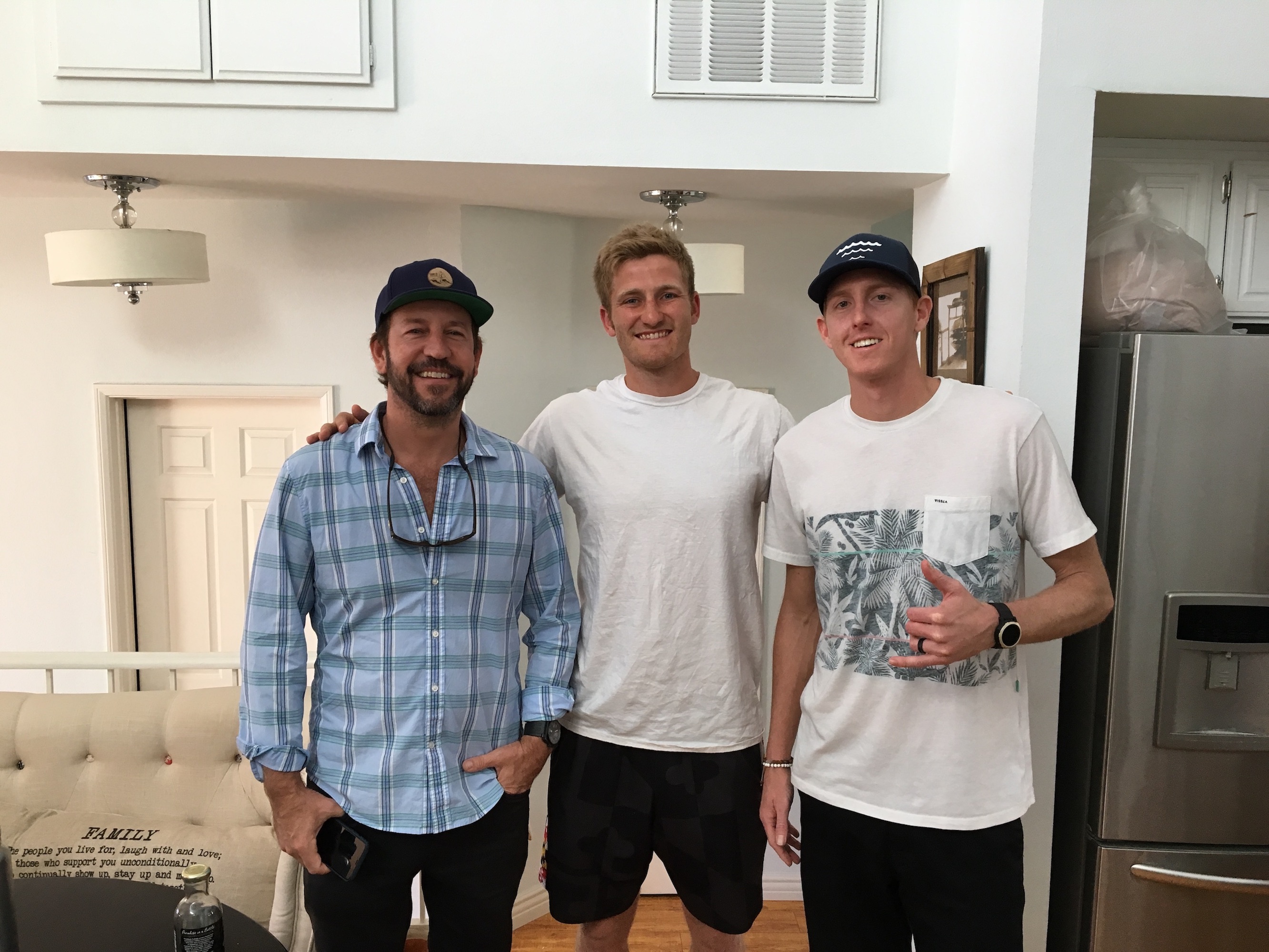
Wednesday Feb 21, 2018
Can p1440 change the landscape of beach volleyball?
Wednesday Feb 21, 2018
Wednesday Feb 21, 2018
It’s not a tour.
That’s the first thing that Dave Mays, this week’s guest on SANDCAST: Beach Volleyball with Tri Bourne and Travis Mewhirter, wants you to know about p1440, of which he is a founding partner.
It is many different things with many different meanings. Take, for example, the name itself. The 1440 is assured: It represents the 1,440 minutes we all have per day. But the p? Platform seems to be the most popular word for it, though, as Mays says, it’s up to your own interpretation. It could be purpose. Or power. Or people. Or whatever word that starts with ‘p’ you’d like to use to represent how you’d like to use your 1,440 minutes in a day.
Would you like to use it to strengthen your relationship with people? People it is. Or strengthening your mind, body and soul? Power it is.
That sort of the point: p1440, and how you spend your minutes, is up to you.
To some, yes, that means it’s a beach volleyball tour or league, and currently, there are eight events on the schedule, which bridges 2018 and 2019. The first four are set – Chicago in September, with Huntington Beach, San Diego and San Jose to follow – while the next four, which will be held in early 2019, are in limbo, though the sites have been whittled down to a few catchy options. There’s Vegas – Vegas! – a major city in Texas (Dallas and Houston, namely), Miami, Hawaii.
An ambitious start. An exciting start. And that hardly scratches the surface, for each event is not just a beach volleyball tournament.
It is, as Kerri Walsh-Jennings, a co-founder along with her husband, Casey Jennings, and Mays, has taken to saying: “Part Wanderlust, part Coachella, part beach volleyball league.”
Each event, tantamount to the World Series of Beach Volleyball, will feature a tournament, but it will also serve as a music festival of sorts, replete with concerts and fanfare and everything you’d expect of the triumvirate Walsh-Jennings mentioned.
How, you may be wondering, can an upstart tour fund eight events while also doubling as a music festival? Beach volleyball has been a notoriously volatile space in the market, in spite of the sport itself growing every year, to the point that more girls play volleyball than soccer or track and field or basketball.
For females, it’s the most popular sport in the country. And yet nobody has been able to monetize the market in a sustainable enough fashion for it to work. The business model has remained the same since a company named Event Concepts began putting on professional events in 1976.
They’d find a sponsor – Schlitz Beer was the first – or many sponsors, to throw in money, and that money would then be translated into prize money, which would draw talent and a crowd to watch that talent. Sponsors would be happy because they got the eyeballs they wanted, players would be happy because they got the prize money they wanted.
And so it went.
Until, of course, the tabs being run up by the tour were too hefty for the sponsors to cover, and one gigantic failure led to the next. Event Concepts was booted in 1984, thanks to a player protest at the World Championships of Beach Volleyball, and in came the AVP, an organization led by the players and a young, savvy agent named Leonard Armato. The AVP changed hands in 1990, when Armato was replaced by Jeff Dankworth, who in 1994 was replaced by Jerry Solomon, whose gross mishandling of the finances led to a bankruptcy, only for the AVP to be revived by – who else? – Armato in 2001.
Nine years later it was bankrupt again, and in 2012, Donald Sun took over and put on a pair of events, and since then he has done a fine job of steadying the frighteningly tenuous heartbeat of beach volleyball, increasing prize money and events and introducing a “Gold Series” and putting the sport back on television.
And yet the business model remains relatively the same, though there are certainly various nuances, as 1976: sponsor-driven.
“If we were to start a new pro beach volleyball tour tomorrow, we would fail,” Mays says on SANDCAST. “So that’s why we’re not starting a pro beach volleyball tour. We’re taking the sport of volleyball and we’re celebrating it, what works and what doesn’t. We’re applying some principles of what have worked and what do work, to this.”
And here is where the differentiation between p1440 and the AVP Tour begins.
p1440 will charge a $40 gate fee, every tournament. The AVP allows its fans, which pack stadiums, for free, though there are paid box seats. But the entry gate will hardly be the chief source of revenue for p1440.
That’s where the “platform” comes in.
Above all else, above volleyball and music and entertainment, p1440 is built upon four pillars: competition, development, health and wellness, entertainment.
The platform, an online resource featuring myriad digital media, will host webinars, coaching, nutrition, live clinics – any type of wellness resource you might need, be it mental, spiritual or physical. It’s not live yet – it is scheduled to launch in July – and until 2021, it will not be monetized. The content will be entirely free, with the goal of reaching 4 million subscribers by 2021, by which point a subscription fee will be required. No numbers are for sure in terms of the subscription fee, but on SANDCAST, there was a $5 estimate. If p1440 hits its goal of 4 million subscribers at $5 a month, you can do the math – $20 million in revenue per month from the platform alone.
If successful – an admittedly large “if” in this sport – the subscription model answers, in part, where the prize money and funding for the tour will stem from. Which leads to the next inevitable question: Who will be receiving those paychecks?
Mays, who built and sold a shipping business for a not-so-small fortune and was looking for a new project to work on, thinks it’s no question at all: p1440 will feature the finest talent in beach volleyball, and not only because there will be more prize money – he gave no definitive figure on what the breakdown will be, only that it will be more – but there will be more talent.
The failure to retain the game’s highest talent led to the breakdown of the NVL. Players want to play against the best, which was why, when Sun revived the AVP in 2012, and the top players returned, the NVL lost momentum and, eventually, financial backing. The best currently play on the AVP and FIVB tours.
There will be a battle over loyalty, the AVP’s non-compete (p1440 has no exclusivity clause in its contract), and, when it comes down to it, prize money and sponsors.
Mays intends on bringing in the best, not only in this country, but overseas.
Each tournament will feature a 24-team main draw. Sixteen of those teams will be Americans automatically seeded in. Four will come out of the qualifier. And four will be international wild cards.
Want to play against the best? p1440 could have Alison and Bruno, or Evandro and Andre, or Nicolai and Lupo. For the women, it could be Ludwig and Walkenhorst, Agatha and Duda, Talita and Larissa.
Walsh’s reach, even if she has been on the peripherals of the game as a player lately, is still extensive. You don’t win three gold medals and suddenly lose all of your contacts.
Those players mentioned will be available, too, for Mays and Walsh-Jennings and Casey Jennings have made it a point to schedule around the AVP as well as four- and five-star FIVBS.
The plan is to have the best in the world, playing for the best prize money in the game, with some music and entertainment to cap the night.
It’s a lot. It’s big. It’s potentially transformative. It might work, it might not. That’s part of the excitement around this movement. And maybe that all sounds a bit crazy, though it is worth reminding that the most successful ideas and businesses were, at one point or other, invariably labeled “crazy.”
As Walsh-Jennings wrote on Instagram: “It’s go time.”

Wednesday Feb 14, 2018
From Australia with gold, with Avery Drost and Amanda Dowdy
Wednesday Feb 14, 2018
Wednesday Feb 14, 2018
Contrary to popular belief, the first gold medal of the winter was not, in fact, won by 17-year-old snowboarder Red Gerard, who snatched the slopestyle gold medal in the 2018 Olympic Games from Canadian Max Parrot.
The initial golds of the month were not even won in PyeongChang, but in Shepparton, Australia, on a beach, and not in the perversely intriguing snow volleyball, which is currently an exhibition event for the Winter Olympics. The first went to Amanda Dowdy – one of two guests this week on SANDCAST: Beach Volleyball with Tri Bourne and Travis Mewhirter – and Irene Pollock, who won five straight matches, the last three of which went the full three sets. Shortly after, Avery Drost – Dowdy’s partner on SANDCAST – and Chase Frishman, playing in their first international event together, claimed a gold of their own, making for the first gold medal sweep of the winter season, soon to be followed by American snowboarders in the halfpipe and slopestyle in the PyeongChang Games.
“I’m so happy,” Drost said afterwards. “They’re a great team. They play a fun style of volleyball. It was our privilege to play against them, in Australia. To be doing this with Ledge here, who’s become like a brother to me – I love this guy, and just so humbled by this moment, with this guy, with you guys, it’s so wonderful.”
Yes, it is wonderful. And, for Drost, entirely unexpected. He had written off the one-star events for the obvious reason: They’re entirely, financially speaking, unfeasible.
“I remember looking at the star system when it first came out and breaking it down and thinking these one-stars don’t make sense,” said Drost, who split 1,000 with Frishman, as did Pollock and Dowdy. “Financially it doesn’t add up. Points are great but this is kind of ridiculousness when it comes to finances.”
The NORCECA path seemed more doable, though the continental tour is notoriously mercurial, known for cancelling events last second. Then again, as Drost said: “There’s not an abundance of doing things other ways.”
So there was this: world tour competition, available points, far less of a chance of an abrupt cancellation. And, of course, Australia.
“There are worse places to go,” Drost said.
Indeed, and Dowdy and Pollock actually one-upped their male counterparts in that department, hitting New Zealand’s tour for an event prior to claiming the top of the podium in Australia. It underscores a slight difference between the goals for the two teams: Pollock and Dowdy are looking for points, yes, as are all teams seeking the climb the international ladder, but perhaps more than that, they just want to play some ball.
“The more I can play the better it is for me,” said Dowdy, a 27-year-old who set the all-time kills record as a four-year starter at Texas Tech. “We see it as opportunity. We’re trying to climb that ladder and it’s more of a sacrifice right now because it’s not great financially, I’m not going to sugarcoat that. For us, we’re using it as opportunity. You can only control what you can control, that’s the position we’re in. We’re trying to close that gap.”
And the gap is beginning to close, much faster than they could have anticipated. The points boost they received pushed them into the country quota in the Fort Lauderdale Major. It’s a position some teams justifiably loathe, but to Pollock and Dowdy it was a welcome surprise. They had initially planned on potentially playing in four-stars in April. In a matter of five matches, they’re in a position to compete in a five-star in February.
“That just goes to show how important these smaller tournaments are,” Dowdy said. “We got that opportunity a lot sooner than we thought we would.”
And a gold medal before the rest of Team USA’s winter athletes.
GIVEAWAY: Our first Wilson giveaway will be a SIGNED WILSON VOLLEYBALL BY AVERY DROST AND AMANDA DOWDY. To enter, follow us on Instagram, @sandcast_podcast and comment with your FAVORITE QUOTE from any SANDCAST episode. Tri and Travis will select the winner based on their favorite quote from the comments.
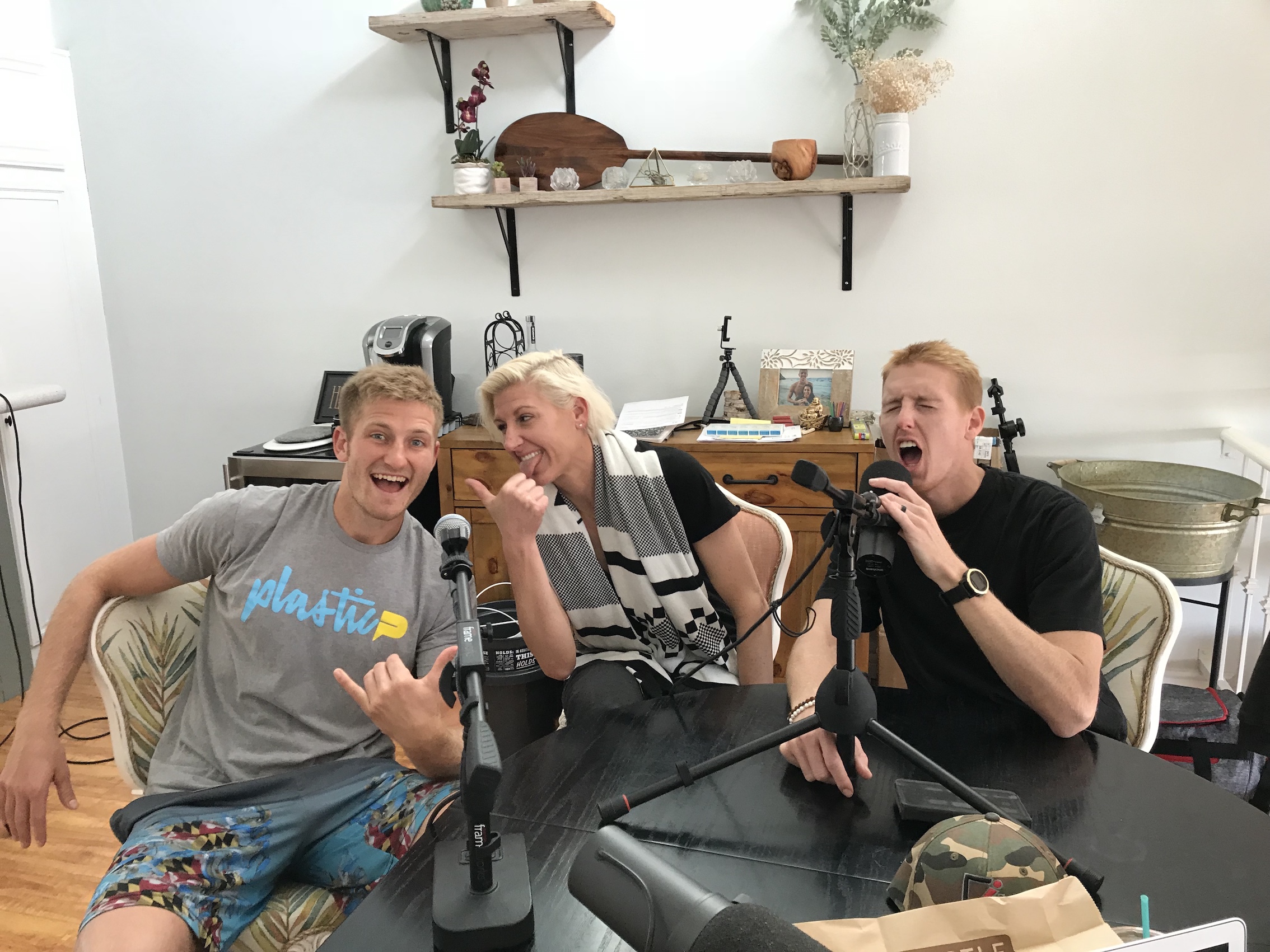
Wednesday Feb 07, 2018
At age 36, Brittany Hochevar is only just arriving
Wednesday Feb 07, 2018
Wednesday Feb 07, 2018
Forget daggers.
The look that Brittany Hochevar gave on SANDCAST: Beach Volleyball with Tri Bourne and Travis Mewhirter could bore a hole straight through a human soul.
The discussion had turned to partnership dynamics, and how it was with Hochevar and her partner, Emily Day. Day, it turns out, is the more organized one – there is always a more organized one – and I said something along the lines of Hochevar just sort of following along from there.
No no.
Brittany Hochevar?
Just sort of following along?
Brittany Hochevar doesn’t simply follow along. She gets after it.
You can look at her workouts on Instagram or her website. They have a ballistic focus and can be slightly terrifying, though Hochevar also blends this with a focus on mindfulness and equanimity. Stillness.
It’s a unique approach, one she labels as “all in but also all out,” and it’s also inarguably working.
In 2017, at the age of 36, Hochevar won three AVPs and took third in another two. Her 14th year on Tour was, crazy as this might sound, her breakout.
“I feel like I’m in my prime,” she said. “It’s wild. I can do stuff – wisdom, timing, that’s another piece. There’s a different timing to things. It’s fun to see that slowdown. When you arrive you just know it and sometimes that’s at 36.”
Who would have guessed she would have arrived here, at 36, in her 14th season, at the top of the game?
Of all people, Hochevar wouldn’t have been one of them. Prior to 2016, Hochevar’s career had been a Sisyphean one, rolling that boulder all the way to the top – only to see it tumble back down.
“I was that 13th player on a 12-man roster type of kid,” she said. “It’s my blessing and my curse.”
At Long Beach State, she replaced Misty May as the setter, took the 49ers to a pair of Final Fours and a national title game – and lost in the final.
In a three-year stint with the United States National Team from 2002-2004, she worked her way onto the roster – only to be the first alternate in the 2004 Olympic Games in Athens.
In 2009, her 51st event on the AVP Tour, she made a final with Jen Fopma, losing in three sets to Dianne DeNecochea and Carrie Dodd. It would be seven years until she took one home. But what a platform on which to do it: the 2016 Manhattan Beach Open.
Hochevar’s first career victory came on the sport’s biggest stage, with a plaque on the Manhattan Beach Pier to prove it.
“Bout time,” May texted her.
“Sometimes,” Hochevar said, “timing is funny.”
Somehow, she had done something exceptionally few athletes across any sport have ever been able to do. Hochevar had begun to reach her athletic peak at age 35. She opened the 2017 season with a win in Huntington Beach and then won back-to-back championships in Hermosa Beach and Manhattan again.
By season’s end, only one team had won multiple events on the AVP Tour: Hochevar and Day. Together, they had flipped the script, broken the narrative. Had Hollywood been writing the 2017 season, with Kerri Walsh-Jennings forgoing the AVP and April Ross in partner limbo, it would have been time for the youngsters to take over.
Oh no. Not yet.
Hochevar had fallen in love with the game again, “fallen in love with passing again,” she said. All those years of coming so close to the peak, of being the 13th on the 12 man roster, of rolling that boulder so high, only for it to tumble back down, had paid off. All those years in Puerto Rico and Spain and Turkey and Siberia had paid off. All of those ballistic workouts and pilates and meditating and taking care of her body had paid off.
She has a pair of tattoos on her arms, “Here” written on the left, “I am” written on the right.
At 36 years young, here Hochevar is.
Sometimes, you arrive, and you just know it.
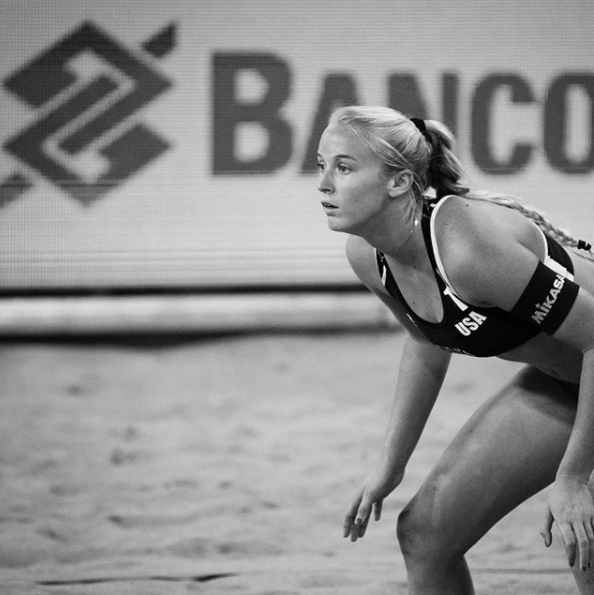
Wednesday Jan 31, 2018
Sara Hughes: Beach volleyball's next top role model, part 2
Wednesday Jan 31, 2018
Wednesday Jan 31, 2018
Perhaps you needed proof. Proof that Sara Hughes is, indeed, the one to fit the headline of this very podcast: That she is fit to become the next face of beach volleyball.
Had you stopped by Huntington Beach last Friday morning, you’d have had all the proof you’d need.
There, on court one, was Hughes, this week’s repeat guest on SANDCAST: Beach Volleyball with Tri Bourne and Travis Mewhirter, and partner Kelly Claes. There was coach Jose Loiola and mentor Misty May-Treanor. There was Ben Vaught and Tanner Woods, because, yes, Hughes and Claes train with professional men on occasion.
And there, lining the court was a dozen or so girls, member of the Long Beach City beach volleyball team, watching, studying, looking on.
Taking notes on Hughes.
Yes, they were at the Huntington Beach Pier that day because they had practice – but a Long Beach-based team doesn’t necessarily need to come to Huntington Beach to practice. There were there because that’s where May-Treanor, the director of beach volleyball operations at LBC, was, and May-Treanor was there because, well, Hughes.
There’s a reason Hughes and Claes have landed one Hall of Famer (Loiola) and another who could go down as one of the greatest talents in volleyball history as their coaches. It could be argued – and it often is – that Hughes and Claes, both 22 years old, have more potential than any individual or team in the world, more, even, than the precocious Duda, the 19-year-old Brazilian star and 2016 FIVB Rookie of the Year.
Already, Hughes and Claes have won an AVP, the 2017 season-finale in Chicago. Already they have reached FIVB quarterfinals and landed some of the game’s top names as sponsors.
Already they have broken previous goals and established new ones.
In their first season as professionals, breaking pool in international play was the goal. In their first event, a four-star in Rio, they finished fifth. Now, in just one season as full-time professionals, and a truncated one at that, seeing as they had to miss the early season events while they wrapped up what figures to be the most dominant college run for quite some time, Hughes and Claes see anything less than a podium finish as a shortcoming.
Finishes, though, are but one tangible measurement for the success of Hughes and Claes. There is no barometer through which to measure their “inspiration” to the next generation of beach volleyball players.
For now, you can see it yourself, right there, on the sidelines of court one, watching, observing, taking notes – figuring out ways to become the Next Sara Hughes.
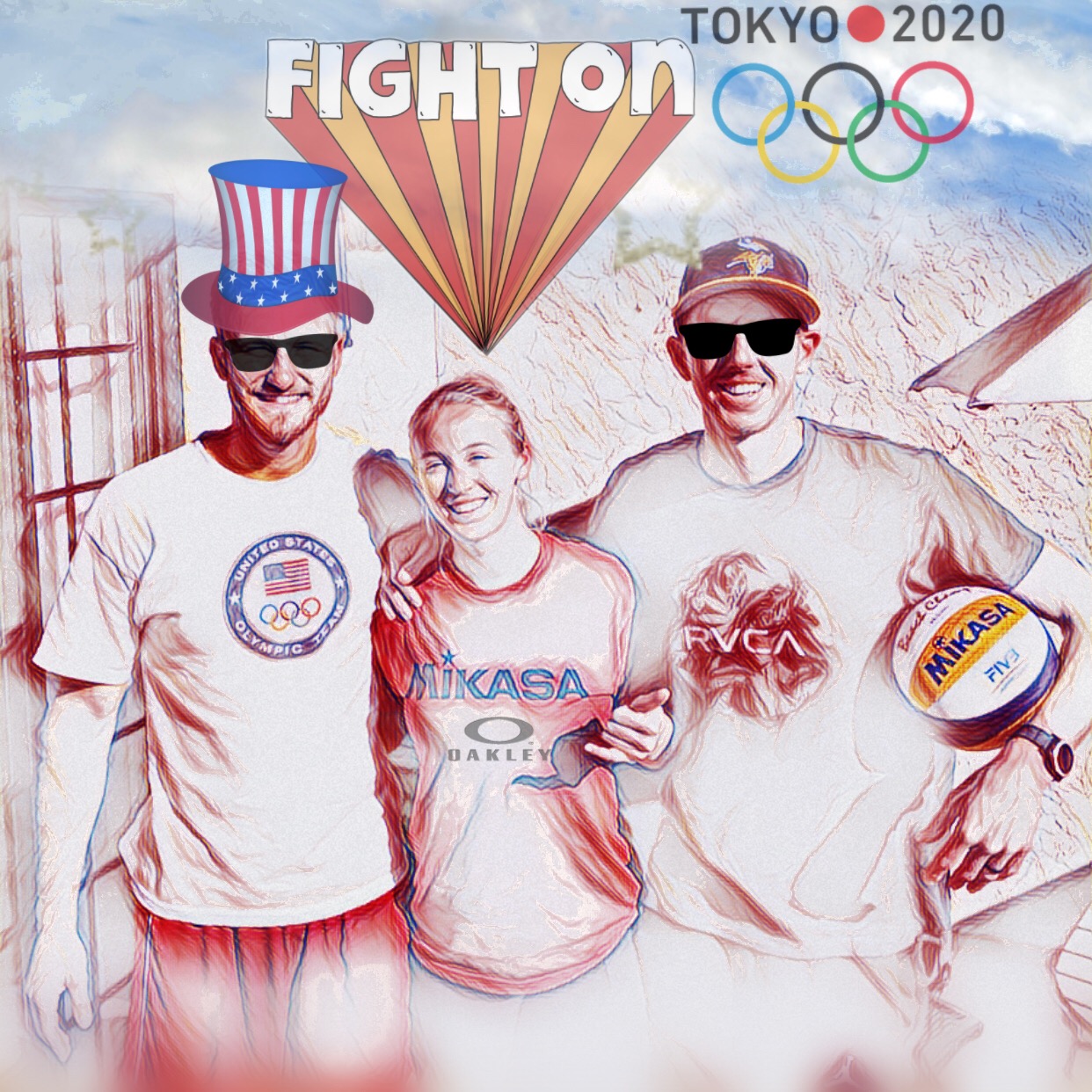
Wednesday Jan 24, 2018
Sara Hughes: Beach volleyball's next top role model, part 1
Wednesday Jan 24, 2018
Wednesday Jan 24, 2018
On one of the walls in Sara Hughes’ bedroom is a poster of Misty May-Treanor. It’s been there since she was little, when Hughes began getting into volleyball, serving as a reminder of what she might become one day should she continue to pursue this beach volleyball dream of hers.
So it struck her when, during a tournament this season, a parent of a young fan approached her and told Hughes that, on one of the walls in her daughter’s bedroom, is a poster of Hughes.
“I was like ‘No way that’s actually happening,’” Hughes recalled on SANDCAST: Beach Volleyball with Tri Bourne and Travis Mewhirter. “I am so grateful for that and I hope I can keep being a person young people can look up to for a long time and thank you to everyone who does.”
Did you catch that, at the end? Hughes thanked the fans for looking up to her, not the other way around. In an era where celebrities grow more and more closed off, taking instead to social media to communicate behind iPhones and laptops, Hughes remains open, willing to talk to anyone, pepper with anyone, give back any way she can.
“I’m always just trying to help people,” she said. “If anybody wants to ask, just come up to me, you can ask me directly.”
No different than May-Treanor continues to treat her.
When her age could still be measured with a single digit, Hughes would head down to the Huntington Beach Pier and sit on the wall, waiting for a chance, any chance, to simply shag balls for May-Treanor. Sometimes May-Treanor would let her pepper or hop in for a drill or two, creating an indelible memory that Hughes will cherish more than likely the rest of her life.
“I love talking to people and I love talking to young girls because I don’t think I’d be in the position I am today if I didn’t have the coaches I had and people like Misty May taking the time to talk to me,” she said. “I love doing the same to everyone else.”
She’s a sponsor’s dream, Hughes. She has the looks – blonde hair, blue eyes, Colgate smile – the smarts – she’s currently on a one-year track to earn her Master’s degree, just a year after delivering a graduation speech at USC – the media savvy, the talent, a voracious competitive drive juxtaposed with a disarmingly charming personality.
Oh, yes. She has earned this position, the right to have Mikasa run her through photo shoots and turn those shoots into posters for young girls to hang on their walls, to point to each night and morning and say “I want to be like that.”
Her accolades at USC could fill a small book’s worth of pages, and it’s a wonder if some of her records – four consecutive national titles, a winning streak that eclipsed 100 matches, a perfect 48-0 junior season, four-time All-American – will ever be broken.
Justifiably, this drew no small amount of media coverage, and while she was appreciative – always thanking anyone for taking the time and interest in her – it drove her a bit insane, how those reporters would invariably walk right past her exceptionally talented teammates. On the occasion that the media showed interest in the rest of USC’s indomitable team, more often than not they’d ask questions not about how their match went, but what they thought about Sara and her partner, Kelly Claes.
“I hated that when it was just ‘Oh! Sara and Kelly and Team USC!’” Hughes said. “I was like ‘No, you don’t realize, these girls who are on [teams] two, three, four, to the eighth team, they’re our support system. We would not be close to being good or successful without our teammates. They deserve just as much fame and respect as we do because we’re out there on the same hot court at USC and we’re training, every day, together.”
Her teammates, as she said, were plenty talented, and a number of them – Nicolette Martin, Terese Cannon, Jenna Belton, Sophie Bukovic, Allie Wheeler, to name a few – have already begun making a name for themselves on the AVP Tour.
Yet Hughes, as May-Treanor was, will be the name fans point to as the next in this massive wave of beach volleyball talent rising from the college ranks. She will be the one on the posters, and in the commercials for Oakley and KT Tape and Mikasa and any other sponsor wise enough to sign her.
She’s becoming the next generation’s version of May-Treanor – the one everyone looks up to – quicker than she could have possibly realized.
The final question of SANDCAST is reserved for the athletes to discuss anything else they’d like to discuss, anything the hosts may have missed. Most demur, maybe shout out a sponsor or two, thank us for the time.
Hughes, instead, had a message for her fans: “For the young players and any parents who are listening, I love the indoor game and the beach game, of course. So a lot of players are making this decision where they love the indoor but they have to play the beach in college because they think that’s the only thing they can play. I just think it’s huge for young girls to play both if they love both.”
You can teach any volleyball skill there is. But to become the next face of a sport, as May-Treanor once was?
That’s a trait passed down, from one legend to the one who might just become the next.